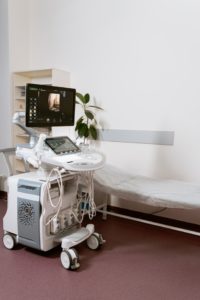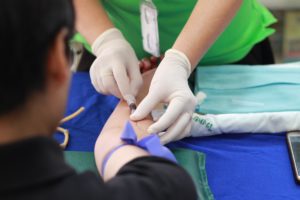Liver cancer is the malignant tumour/cancer that begin in the liver. Secondary liver cancer (cancer that starts somewhere else then spread to liver cells) is commoner than primary cancer (cancer that originates from your liver itself). The main type of primary liver cancer is hepatocellular carcinoma (HCC). Common risk factors are viral hepatitis B, liver cirrhosis of any aetiology, excessive alcohol consumption, diabetes mellitus and exposure to aflatoxins, and certain inherited liver diseases, such as Hemochromatosis, Alpha-1 antitrypsin deficiency. Patients are stratified into stages A, B C, and D based on the Barcelona Clinic Liver Cancer (BCLC) staging classification.
 According to GLOBOCAN 2020, liver cancer was the 5th commonest cancer among Malaysians. Hepatitis B Virus remains the commonest cause of liver cancer in Malaysia. Awareness among Malaysians regarding liver cancer is still low. Many patients came in at advanced stage. According to KL Goh’s study1 of 348 patients with HCC at University Malaya Medical Centre (UMMC), majority of the patients were above 60-year-old, commoner in male, and Chinese (68%), besides, hepatitis B virus infection was the predominant aetiology in Malay and Chinese patients, while alcohol intake and cryptogenic cause were commoner in Indian patients.
According to GLOBOCAN 2020, liver cancer was the 5th commonest cancer among Malaysians. Hepatitis B Virus remains the commonest cause of liver cancer in Malaysia. Awareness among Malaysians regarding liver cancer is still low. Many patients came in at advanced stage. According to KL Goh’s study1 of 348 patients with HCC at University Malaya Medical Centre (UMMC), majority of the patients were above 60-year-old, commoner in male, and Chinese (68%), besides, hepatitis B virus infection was the predominant aetiology in Malay and Chinese patients, while alcohol intake and cryptogenic cause were commoner in Indian patients.
The effectiveness of liver cancer treatment depends upon the disease stage at the time of diagnosis. With early detection of the disease, diagnosis can be made earlier, and management can be carried out on time, the survival rate or quality of life of the patients will be improved.
Who should undergo regular screening for liver cancer?
Indications for regular screening for liver cancer are:
- Patients with liver cirrhosis
More than 80% of HCC arise in the contest of underlying liver cirrhosis.2
- Patients without cirrhosis, but with chronic Hepatitis B Virus infection, advanced fibrosis, or noncirrhotic non-alcoholic fatty liver disease (NAFLD).
 How should we screen for liver cancer?
How should we screen for liver cancer?
Screening programs should consist of lifelong, 6 monthly:
- ultrasound scans of hepatobiliary system, and
Patients with poor-quality ultrasonographic images can be further evaluated with multiphase contrast-enhanced computed tomography (CT) or magnetic resonance imaging (MRI).
- serum biomarker Alpha feto Protein (AFP) testing.
An AFP level between 10 ng/mL to 20 ng/mL is normal for adults. An extremely high level of AFP or greater than 400 ng/mL—could be a sign of liver tumours.
Any role for obese patients to go for liver cancer screening?
Obesity and diabetes mellitus are increasing rapidly globally as well as in our community. NAFLD is becoming one of the commonest causes of chronic liver disease worldwide. And NAFLD-related HCC has emerged as the most rapidly growing indication for liver transplantation. Although there is no consensus on whether obesity should be one of the indications to do liver cancer screening, non-cirrhotic obese patients with NAFLD are having higher risk of developing liver cancer, they should be encouraged to go for liver cancer screening.
Is liver biopsy necessary as a part of liver cancer screening?
A biopsy is the removal of a sample of liver tissue to further study in the pathology lab if it is cancer. It can be done at the bedside, however there’s minimal risk of complications, i.e. bleeding, infection, and possible seeding of cancer cells along the needle’s path. Nowadays, with advancing technology of imaging radiology, most of the liver cancer can be picked up certainly. Liver biopsy is no longer a “must” in diagnosis of liver cancer.
References:
- Goh KL, Razlan H, Hartono JL, Qua CS, Yoong BK, Koh PS, Abdullah BJ. Liver cancer in Malaysia: epidemiology and clinical presentation in a multiracial Asian population. J Dig Dis. 2015 Mar;16(3):152-8.
- Forner, M. Reig, J. Bruix. Hepatocellular carcinoma. Lancet 2018;391:1301-1314.
By Dr Chieng Jin Yu, Medical Lecturer, Consultant Gastroenterologist and Hepatologist, Universiti Putra Malaysia (UPM).
[This article belongs to The Malaysian Medical Gazette. Any republication (online or offline) without written permission from The Malaysian Medical Gazette is prohibited.]
